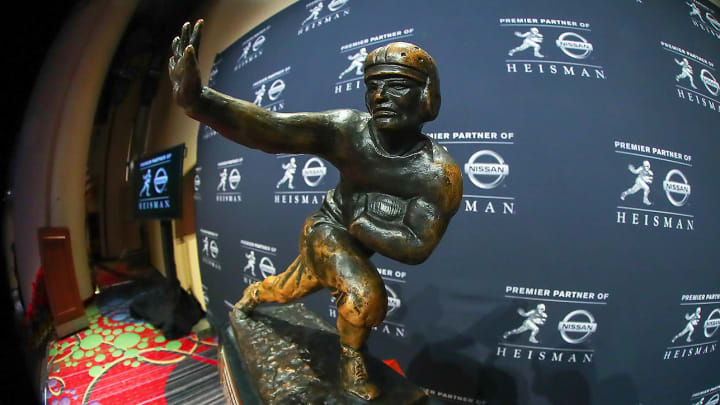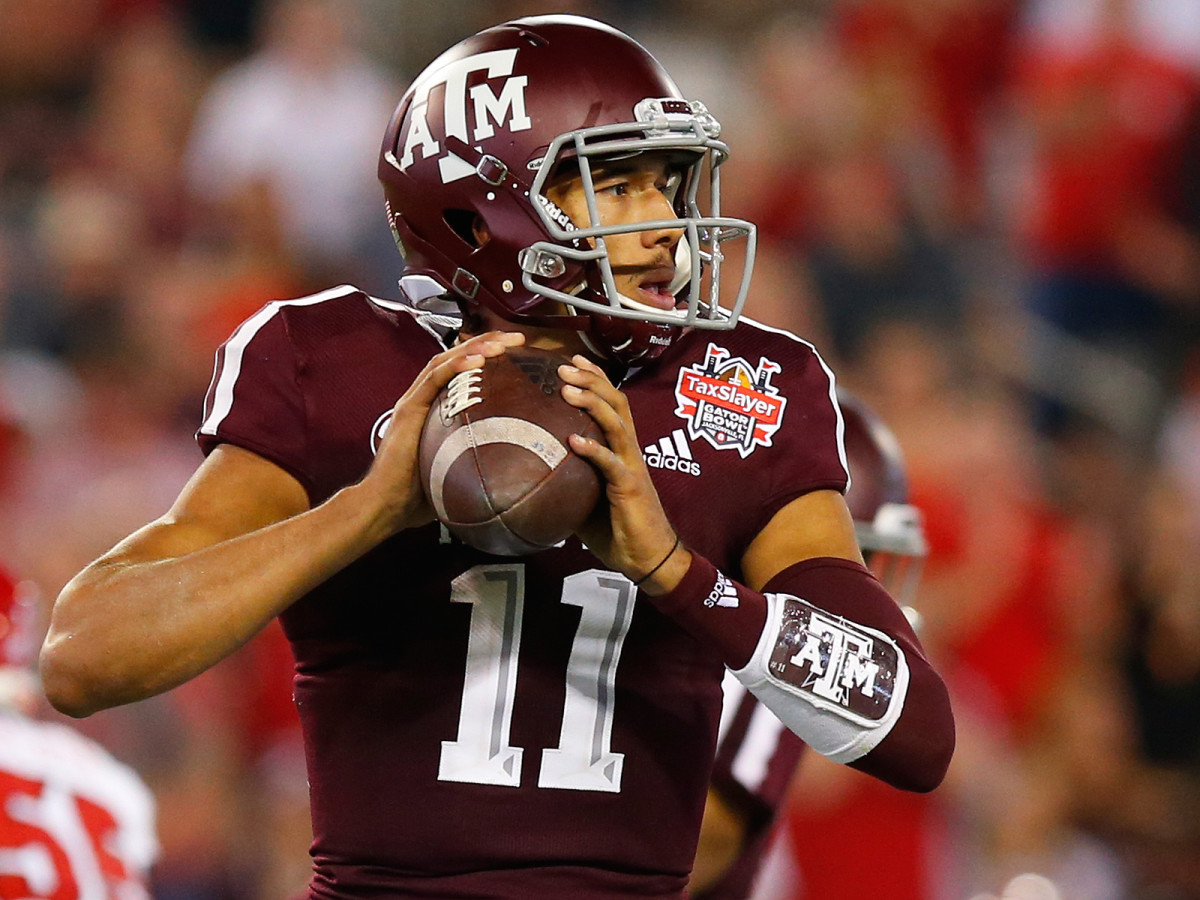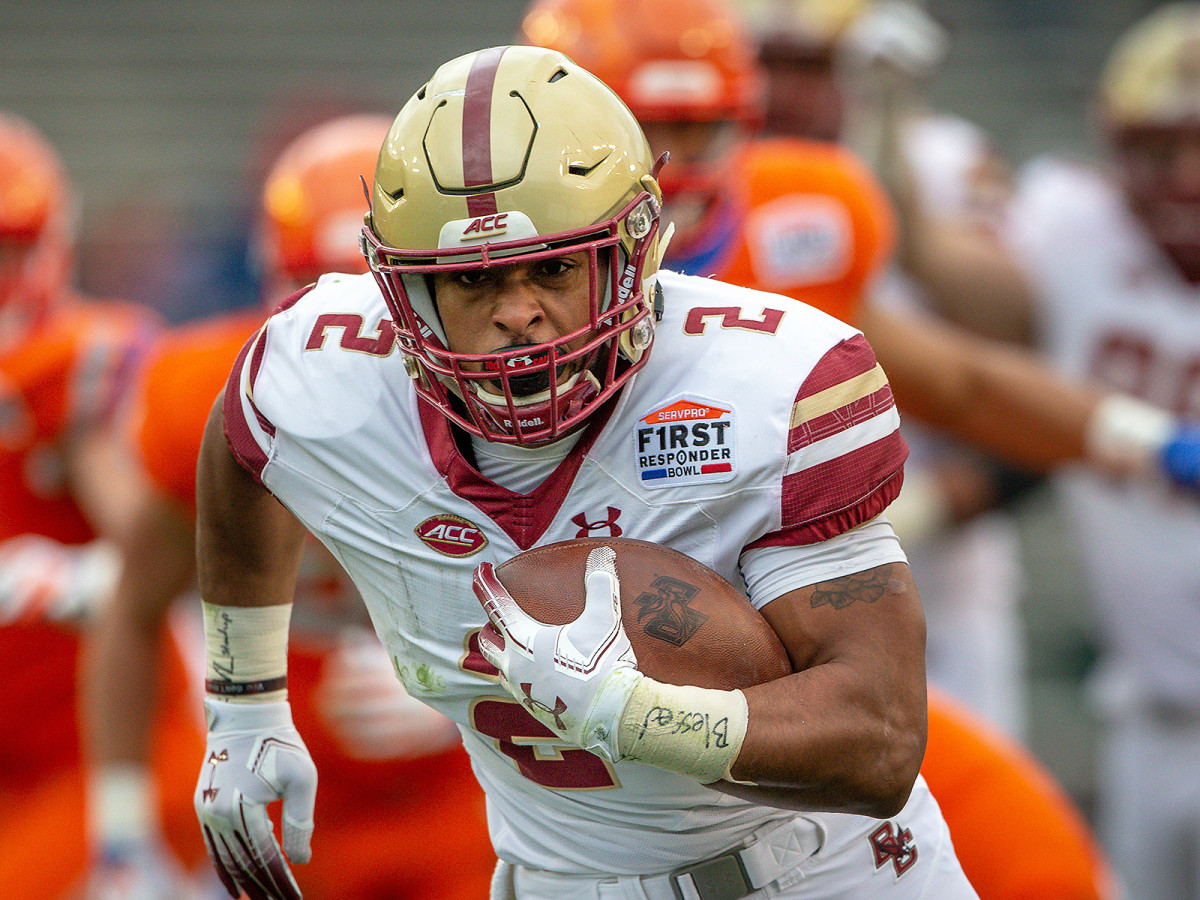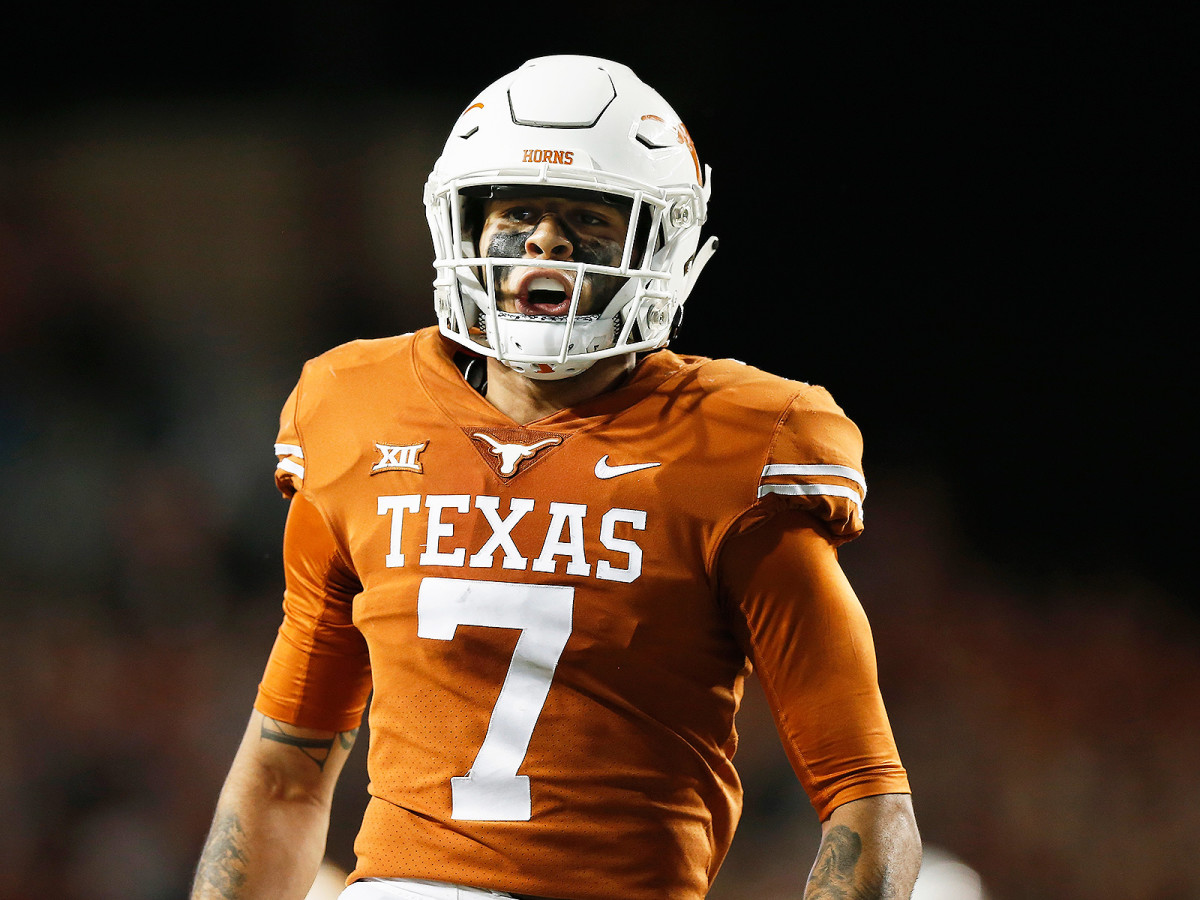The 117 College Football Players Who Could Win the 2019 Heisman Trophy

We’re in the dead part of the football schedule, smack in the middle of that awkward time in between the major offseason developments and the actual preseason. The content keeps rolling, though, usually in the form of comprehensive teampreviews, and every small morsel of news gets overanalyzed and stretched out to feed our insatiable desire to read about football. That’s the negative—the no football part. But what you also get this time of year is more free time, which gives football writers more flexibility to turn outside-the-box ideas into interesting stories. I came across one of those ideas recently when ESPN’s Bill Barnwell laid out the 233 players who could win NFL MVP in 2019 using the award’s history. I thought it could be interesting to do a similar exercise for the Heisman Trophy and, after going through past winners and pouring over NCAA leaderboards and rosters, I’ve determined there are 117 players who have a chance to win the Heisman Trophy this season.
Before you yell at me for including the likes of Artur Sitkowski and Jawon Pass on this list (yes, I did that), hear me out. I’m not saying all of these players have a decent chance; most of them don’t. What I’m saying is that, based on the last 21 years of finalists since the BCS era began in 1998, these are the candidates that have some sort of path to winning the Heisman Trophy. I hesitated to use an earlier year as my start date because football has changed so much recently, particularly on the offensive side of the ball. Some of the categories below are imprecise, and some of the decisions and categories are up for interpretation, but remember that this is a thought experiment more than anything else.
Here we go—the 117 players who can win the Heisman Trophy, based on history:
Group I: The Elite Quarterbacks on Elite Teams
This group is the most straightforward. These are the top-tier quarterbacks on powerhouse teams who enter the season with the kind of hype that gives them a head start in the race. These players’ teams should be in the thick of the playoff conversation, which inherently gives them a leg up. Nobody would be the least bit shocked if the Heisman winner came from this group. Think Matt Leinart in 2004 or Sam Bradford in 2008.
Candidates (4): Tua Tagovailoa (Alabama), Trevor Lawrence (Clemson), Jake Fromm (Georgia), Jalen Hurts (Oklahoma)
Group II: Very Good Quarterbacks on Good Teams
Group II is similar to Group I in that it wouldn’t shock anyone if one of these players won the Heisman. These are good quarterbacks from big schools, but they’re a step down from the elite group above. If they repeat previous success and their teams get to the playoff, they will be in prime Heisman position. Think Troy Smith in 2006.
Candidates (6): Shea Patterson (Michigan), Sam Ehlinger (Texas), Ian Book (Notre Dame), Justin Fields (Ohio State), Justin Herbert (Oregon), Adrian Martinez (Nebraska)

Group III: Good Guarterbacks on Good or Pretty Good Teams
Another step down here, but these QBs have a path to the award after players like Iowa’s Brad Banks (second-place in 2002) and Louisville’s Lamar Jackson (first-place in 2016) had massive leaps on successful teams to get into the Heisman conversations. It’s more unlikely any of these players win the award, but we can’t rule it out.
Candidates (15): K.J. Costello (Stanford), Joe Burrow (LSU), Feleipe Franks (Florida), Kellen Mond (Texas A&M), Brian Lewerke (Michigan State), Nate Stanley (Iowa), Kelly Bryant (Missouri), Jake Bentley (South Carolina), Bryce Perkins (Virginia), Brock Purdy (Iowa State), Alan Bowman (Texas Tech), Tyler Huntley (Utah), Khalil Tate (Arizona), Steven Montez (Colorado), JT Daniels (USC)
Group IV: The Non-Power 5 Stars
While a non-Power 5 player has never won the Heisman in the BCS era, there is precedent for a non-Power 5 Heisman finalist, which means these players have at least a fighting chance. Hawaii’s Colt Brennan and Northern Illinois’s Jordan Lynch finished third in Heisman voting in 2007 and 2013, respectively. A significant common thread between the two players is that they were both coming off breakout seasons before the seasons in which they were Heisman finalists, which gave them more name recognition and credibility entering the season (both players arguably had better stats in the year before they were finalists.) What does that mean? It’s extremely difficult for non-Power 5 players to generate enough support for a Heisman run after one big season. After two big seasons, there’s enough of a body of work to legitimize the massive numbers at an inferior level. History says these players won’t win the award, but they can come close.
Candidates (4): Cole McDonald (Hawaii), Mason Fine (North Texas), Brady White (Memphis), D’Eriq King (Houston)
Group V: First-Year Starters Who Could Pop
You don’t need to have previous starting experience to win a Heisman. Jameis Wiston and Johnny Manziel won the award as redshirt freshmen, and Cam Newton won the award after a season in junior college and no meaningful FBS experience. Realistically, these players need to be part of established programs where there’s a ready-made infrastructure conducive to winning. Some of these quarterback competitions are still up for grabs, hence the “or” included between some of the names below.
Candidates (11): Joey Gatewood and Bo Nix (Auburn), Jacob Eason (Washington), Sean Clifford (Penn State), Hunter Johnson (Northwestern), Jack Coan and Graham Mertz (Wisconsin), Keytaon Thompson and Tommy Stevens (Mississippi State), Gage Gubrud (Washington State), Spencer Sanders (Oklahoma State)
Group VI: All Other Power 5 Starting Quarterbacks
We can’t rule out any player who starts for a Power 5 school. Any quarterback from a power conference has a schedule hard enough to get to the playoff with enough wins, and there’s precedent for a Heisman winner from a program with a losing history: Robert Griffin III from Baylor. In the 15 years before Griffin won the Heisman in 2011, Baylor had just one winning season, and that was a 7–6 campaign in 2010. If you’re a Power 5 starting quarterback, you’ll have enough opportunities to play your way into the Heisman race, no matter who you are.
Candidates (33): Peyton Ramsey (Indiana), Zack Annexstad (Minnesota), Artur Sitkowski (Rutgers), Isaiah Williams (Illinois), Josh Jackson (Maryland), Elijah Sindelar (Purdue), Jarrett Guarantano (Tennessee), Terry Wilson (Kentucky), Ben Hicks (Arkansas), Matt Corral (Ole Miss), Riley Neal (Vanderbilt), Ryan Willis (Virginia Tech), Tommy DeVito (Syracuse), James Blackman and Alex Hornibrook (Florida State), Jamie Newman (Wake Forest), Anthony Brown (Boston College), Kenny Pickett (Pitt), N’Kosi Perry (Miami Fl.), Matt McKay (NC State), Jawon Pass (Louisville), Quentin Harris (Duke), Sam Howell (North Carolina), Tobias Oliver (Georgia Tech), Charlie Brewer (Baylor), Skylar Thompson (Kansas State), Austin Kendall (West Virginia), Alex Delton (TCU), Thomas MacVittie (Kansas), Dorian Thompson-Robinson (UCLA), Dillon Sterling-Cole (Arizona State), Chase Garbers (Cal), Jake Luton (Oregon State)

Group VII: Workhorse Running Backs
Running back is the only non-quarterback position to win the Heisman since the inception of the BCS era in 1998, with Ricky Williams, Ron Dayne, Reggie Bush, Mark Ingram and Derrick Henry winning the award (plenty of other tailbacks have been finalists.) All of those running backs had successful seasons before winning the award, with Mark Ingram’s 702 rushing yards being the lowest rushing total in the season before winning the award. When you dig into the finalists, Christian McCaffrey rushed for 300 yards the season before he finished second in the voting in 2015, but his 7.1 yards per carry as a freshman gave an indication of his potential. In theory, the list of possible running backs that could win the award is countless, so the compilation of this list is admittedly inexact. I used sheer production to account for most of the players, and yards per carry to try to account for players who could have a McCaffrey-esque jump.
Candidates (21): De’Andre Swift (Georgia), Najee Harris (Alabama), Jonathan Taylor (Wisconsin), Travis Etienne (Clemson), Eno Benjamin (Arizona State), J.J. Taylor (Arizona), Jermar Jefferson (Oregon State), A.J. Dillon (Boston College), J.K. Dobbins (Ohio State), Kennedy Brooks (Oklahoma), CJ Verdell (Oregon), Ricky Slade (Penn State), Lamical Perine (Florida), Rakeem Boyd (Arkansas), Joshua Kelley (UCLA), Zack Moss (Utah), Anthony McFarland (Maryland), Reggie Corbin (Illinois), Michael Carter (North Carolina), Pooka Williams (Kansas), Greg McCrae (UCF)
Group VIII: The Adrian Peterson Category
Only one true freshman has been top three in Heisman voting in since 1998: Adrian Peterson, who had 1,925 yards and 15 touchdowns as a first-year in 2004. Realistically, we might not see another true freshman running back like Peterson for long time, if we ever see another one. Peterson was the No. 1 overall recruit in his class, and he was so physically dominant as a freshman that some have speculated he could’ve gone to the NFL straight from high school, which can only be said about a few players in the history of the game. As unlikely as it may be, we can’t rule out true freshmen tailbacks because of Peterson.
If a running back is going to contend for the Heisman one year removed from high school, that running back probably has to have five-star or high four-star pedigree (which speaks to physical maturity), and there has to be an opening for him right away. I’ve come up with four backs here, the top four recruits in the 2019 class. Three of the backs below—Emery, Ealy and Charbonnet—will instantly become the most talented running back on their teams. Sanders has Najee Harris ahead of him at Alabama, which hurts his case, but he’s the top running back in the class, so it makes sense to include him here.
Candidates (4): John Emery Jr. (LSU), Jerrion Ealy (Ole Miss), Zach Charbonnet (Michigan), Trey Sanders (Alabama)
Group IX: The Generational Wide Receivers
For a receiver to earn serious Heisman consideration, he needa to have a gargantuan season, but we’ve seen it done before. There have been two receivers that made the top three in Heisman voting since 1998—Larry Fitzgerald for Pitt in 2003 and Amari Cooper for Alabama in 2014. Fitzgerald had 1,692 yards and 22 touchdowns in 2003, and Cooper had 1,727 yards and 16 touchdowns in 2014. An elite wideout needs to be the best receiver on his team by a mile to garner consideration, which most top wideouts at elite programs aren’t. Plus, it probably needs to be a weak year of Heisman contenders for a receiver to sneak into the mix. I mean, Michael Crabtree had 134 catches for 1,962 yards and 22 touchdowns as a redshirt freshman in 2007 and couldn’t even crack the Heisman’s top three. Being dominant isn’t enough for a receiver; you have be generationally good and hope for the best.
Candidates (11): Tylan Wallace (Oklahoma State), Jerry Jeudy (Alabama), Rondale Moore (Purdue), Tyler Johnson (Minnesota), Damonte Coxie (Memphis), CeeDee Lamb (Oklahoma), Jalen Reagor (TCU), Collin Johnson (Texas), Justyn Ross or Tee Higgins (Clemson), Laviska Shenault (Colorado)

Group X: Defensive Playmakers
Of positions that have been Heisman finalists post-1998, this group is the rarest. Notre Dame linebacker Manti Te’o is the only defensive player to finish in the top three in Heisman voting, finishing second behind Johnny Manziel in 2012. As you may imagine, the circumstances that helped Te’o finish second will be immensely difficult to repeat. Te’o had 113 tackles and seven interceptions in 2012, and he led an undefeated Irish team to the national title game against Alabama. Notre Dame was exceedingly rare in that it was one of the highest-ranked teams in the country with an average quarterback in Everett Golson. Plus, Te’o had a particularly juicy story fueling his narrative-driven case for the award (which was later proven to be a hoax).
The stars have to align for a defensive player to push for the Heisman, but it’s happened before, and thus it can’t be discounted. This is another category where the list of names could be endless, so we used a few different criteria to whittle it down. First, I limited the list to linebackers and safeties, because they play in the middle of the field and are the players with the most opportunities to make plays and accrue stats. Defensive linemen could potentially push for some support with huge sack totals, but it hasn’t happened in the time frame I’m using (even with some incredible defensive linemen playing during that period). Also, I generally tried to include defensive players who don’t play with the top few offenses, like Te’o. I understand that Murray (Oklahoma), Sterns (Texas), Hudson (Michigan) and Gilman (Notre Dame) play with quarterbacks with good Heisman odds, but they could potentially rack up huge numbers and generate some buzz because of the programs they play for, not to mention the possibility of injuries to their quarterbacks. In the grand scheme of things, though, any defensive player is a tremendous reach for the Heisman anyway.
Candidates (8): Khaleke Hudson (Michigan), Shaq Quarterman (Miami Fl.), Grant Delpit (LSU), Joe Bachie (Michigan State), Kenneth Murray (Oklahoma), Caden Sterns (Texas), Troy Dye (Oregon), Alohi Gilman (Notre Dame)
